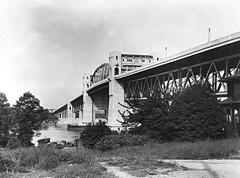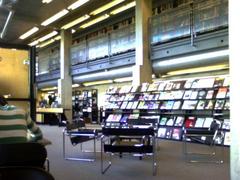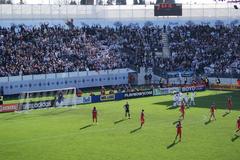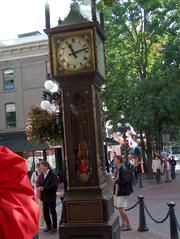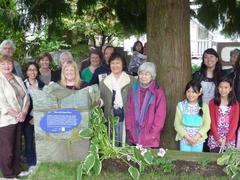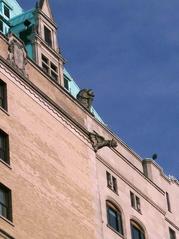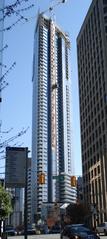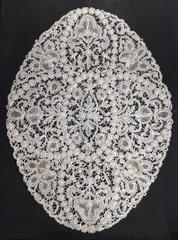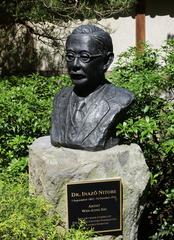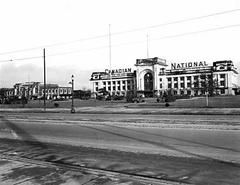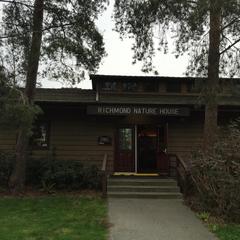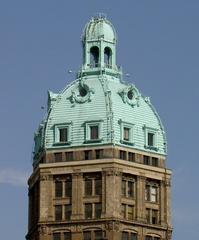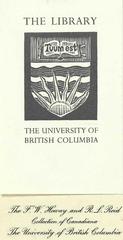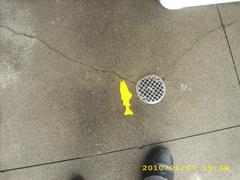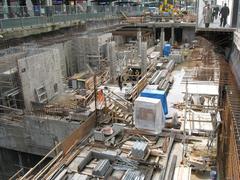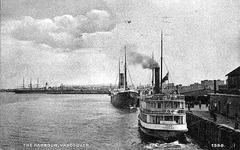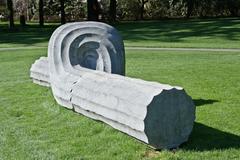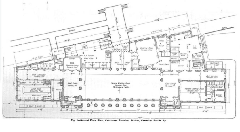
Beatty Street Drill Hall: Visiting Hours, Tickets, and History in Vancouver
Date: 04/07/2025
Introduction
Nestled in downtown Vancouver, the Beatty Street Drill Hall is a landmark of Canada’s military heritage and architectural distinction. Built between 1899 and 1901, it is the city’s oldest surviving drill hall and serves as headquarters for the British Columbia Regiment (Duke of Connaught’s Own Rifles)—Canada’s oldest military unit, established in 1883. Its fortress-like Romanesque Revival design, with battlemented turrets, robust granite foundations, and detailed stonework, symbolizes its strategic importance and enduring strength throughout pivotal periods of Canadian history (Heritage Site Finder; Wikipedia).
Over the years, the Drill Hall has not only trained and mobilized troops for both World Wars and the Korean War but has also served as a civic gathering space for patriotic rallies, commemorative ceremonies, and youth cadet programs. Visitors today can experience its rich heritage by exploring the Regimental Museum, housed within, which displays over a century’s worth of uniforms, weaponry, medals, and archival photographs (British Columbia Regiment Museum; Everything Explained Today).
Its central location—close to Rogers Arena, BC Place, and the Vancouver Public Library—makes it easily accessible by public transit, and a compelling stop for those interested in military history, architecture, or Vancouver’s urban heritage (City of Vancouver Heritage Site; Heritage Vancouver). This guide provides everything you need to plan your visit: from historical background and architectural highlights to visiting hours, ticketing, accessibility, and tips for making the most of your experience.
Historical Overview
Early Development and Purpose
Commissioned by the federal Department of Public Works, the Beatty Street Drill Hall was constructed from 1899 to 1901 to house the burgeoning British Columbia Regiment. Officially opened in 1901 by the Duke of Cornwall (later King George V), its location at 620 Beatty Street provided strategic access to transportation and civic infrastructure, supporting its role as a hub for military training and recruitment (Heritage Site Finder; Wikipedia).
Architectural Significance
Designed by T.W. Fuller, the Drill Hall is a textbook example of Romanesque Revival military architecture. Its thick brick and granite walls, crenellated towers, and limestone parapet (quarried from Gabriola Island) give it a distinctive fortress-like appearance. The original interior featured a vast parade square, offices, storerooms, a firing range, and even a bowling alley—emphasizing its multifunctional role in both military and social life. The Cambie Street Grounds, now a parking lot, once served as an outdoor parade area (Everything Explained Today).
Military Role Through Major Conflicts
The Drill Hall was the epicenter of recruitment and mobilization during World War I, with thousands of British Columbians enlisting here. It remained a crucial military site through World War II and beyond, commemorated by multiple memorials to those who served and fell, including a copper plaque from the Dutch Canadian community recognizing the regiment’s role in the liberation of Holland (Everything Explained Today).
Visitor Information
Location & Getting There
- Address: 620 Beatty Street, Vancouver, BC V6B 2L9
- Transit: Stadium–Chinatown SkyTrain Station (5-minute walk); multiple bus routes nearby
- Parking: Limited street parking; several nearby paid lots
Visiting Hours and Admission
- Museum Hours: Typically open Wednesdays from 10:00 AM to 4:00 PM and Saturdays from 11:00 AM to 3:00 PM (hours may vary—always check official museum website for updates)
- Admission: Free; donations are encouraged to support preservation
Accessibility
- Wheelchair Access: Ramps and accessible restrooms available. Some upper-level rooms may be limited due to the building’s historic nature—contact ahead for details.
Guided Tours and Special Events
- Guided Tours: Available by appointment; check the BC Regiment Museum website for schedules or to arrange group visits.
- Events: The Drill Hall hosts open houses, commemorative ceremonies, and participates in citywide events like Doors Open Vancouver.
Visitor Tips
- Bring government-issued identification for security screening.
- Photography is welcome in public and museum areas; always check for restrictions in operational zones.
- Dress for the weather and wear comfortable shoes.
- Combine your visit with nearby attractions such as BC Place, Rogers Arena, Gastown, or Chinatown.
What to See at the Beatty Street Drill Hall
Exterior Highlights
- Fortress-like Façade: Red brick, granite, and sandstone construction, with prominent turrets and battlements.
- Military Artifacts: Tanks, cannons, and commemorative plaques outside the entrance.
Interior Features
- Parade Square: Expansive, column-free space with original hardwood floors and exposed steel trusses.
- Regimental Museum: Artifacts include uniforms, medals, weapons, Nazi regalia, and a photographic archive dating back to 1883.
- Officers’ Mess: Historical room preserving the social traditions of the regiment.
Memorials and Commemorative Plaques
- Stone cairn: Honoring local war dead from WWI, WWII, Korean War, and peacekeeping missions.
- Copper plaque: From Dutch Canadians, commemorating liberation of Holland.
- Wooden Celtic cross: Dedicated to those fallen at Vimy Ridge.
- Other plaques: Celebrating affiliated regiments and notable individuals.
Preservation and Legacy
Designated a National Historic Site in 1989, the Beatty Street Drill Hall’s heritage status ensures ongoing preservation and restoration efforts, such as seismic upgrades and masonry repairs (Heritage Vancouver). The Drill Hall remains an active military facility, headquarters for the British Columbia Regiment, and a hub for community and educational events.
Frequently Asked Questions (FAQs)
Q: What are the Beatty Street Drill Hall’s visiting hours?
A: The Regimental Museum is typically open on Wednesdays (10:00 AM–4:00 PM) and Saturdays (11:00 AM–3:00 PM). Confirm on the official website before your visit.
Q: Is there an admission fee?
A: Admission is free; donations are welcomed.
Q: Are guided tours available?
A: Yes, tours can be arranged by appointment for individuals or groups.
Q: Is the Drill Hall wheelchair accessible?
A: The main floor is accessible; some historic areas may be limited.
Q: Can I take photographs inside?
A: Photography is permitted in public and museum areas, with restrictions in certain operational zones.
Practical Visitor Tips
- Plan Ahead: Check the museum’s website for the most current hours and event details.
- Booking Tours: For a deeper experience, book a guided tour in advance—especially for groups or educational visits.
- Getting There: Use SkyTrain or bus when possible; parking is limited.
- Accessibility: Contact the museum for specific accessibility needs.
- Combine Your Visit: Make the most of your trip by exploring nearby Vancouver attractions.
Summary and Final Recommendations
The Beatty Street Drill Hall is a living monument, bridging Vancouver’s military past with its vibrant present. As one of the city’s most significant heritage buildings, it offers visitors rich historical insight, engaging exhibits, and immersive guided tours. Its prime downtown location, accessibility, and proximity to other attractions make it an essential stop for both tourists and locals. Support ongoing preservation by donating during your visit, and consider attending public events or ceremonies for a deeper understanding of Vancouver’s military heritage.
For up-to-date visitor information, event listings, and curated guides, download the Audiala mobile app or visit the official websites listed below.
References and Further Reading
- Heritage Site Finder
- Wikipedia: Beatty Street Drill Hall
- Heritage Vancouver
- City of Vancouver Heritage Site
- British Columbia Regiment Museum
- Everything Explained Today
- BCSLA Events
- Vancouver Heritage Foundation




